There is always a sense of déjà vu about articles on biestings/colostrum for both reader and writer. We all know the importance of colostrum, and there is unlikely to be anything in this article that you have not heard before. However, given the importance of biestings to the health and wellbeing of newborn ruminants, it is worth revisiting the key issues.
What is the function of colostrum?
Newborn cattle and sheep are born without antibodies to protect against disease, due to the structure of the placenta (afterbirth/ cleaning). The antibodies in the colostrum are developed by the dam in response to the pathogens present on the farm. These antibodies can be considered specific to the farm.
There is a high concentration of these antibodies in colostrum, which is essentially the milk produced on the first day after the dam gives birth.
An average 40kg calf requires 3l of colostrum within two to four hours of birth and should have consumed at least 10% of its body weight (4l) by the time it is 24 hours of age.
A lamb requires 200ml colostrum per kilo in the first 24 hours of life. The concentration of the antibodies in the colostrum and the ability of the newborn calf or lamb to absorb these antibodies diminishes dramatically after the first 24 hours of life.
Therefore, there is a narrow window to get sufficient volumes of good-quality colostrum into newborn ruminants.
What can go wrong?
The dam may not produce enough colostrum. This may be an issue in some beef breeds which may be low-volume milk producers.
However, in such circumstances, the colostrum is usually more concentrated, but may not still be sufficient to meet the needs of the calf.
What may be of more relevance though is that the dam may have been suckled by a comrade before she calved and reserves are depleted at the time of calving.
In any case, the calf needs more colostrum than what its dam has to offer.
The colostrum is of a poor quality
The nutrition of the dam during pregnancy is a key element in determining the quality of colostrum. Cows and ewes in poor body condition are likely to have poorer-quality colostrum. This may be exacerbated by parasitism with liver fluke in particular an issue. Cows whose dry period has been too short are also likely to have poor colostrum.
Heifers’ and hoggets’ colostrum is likely to be of a poorer quality than that of their more mature comrades, as they are still putting a proportion of their diet into their growth. Mineral deficiencies in the dam, particularly of selenium and iodine, may also give rise to colostrum quality issues and where a deficiency is known it should be addressed in the six weeks prior to giving birth. The quality of colostrum can be assessed using a colostremeter, a device used to measure the specific gravity of colostrum.
The calf/lamb does not consume enough colostrum on time or there is poor absorption of antibodies
There is a relatively narrow timeline for the newborn to consume enough colostrum. It is not enough for the colostrum containing the all important antibodies to be consumed – these antibodies must be absorbed by the gut.
Dystocia, ie a difficult calving or lambing, is the single biggest issue here. Firstly, after a difficult birth the newborn will be exhausted. It may also be injured and consequently may not rise and suckle its dam. Such newborns may also be affected by acidosis, which makes them dopey and slow to suck.
Even if they are stomach-tubed with sufficient volumes of colostrum, the biochemical imbalance in their bodies reduces the absorption of colostral antibodies.
Therefore, beware that if you do not lose the newborn in a difficult calving or lambing, it may still die if it does not consume enough colostrum or absorb the antibodies even if it is fed sufficient volumes. Mineral deficiencies in the dam may give rise to poor vigour in the newborn, and this lack of vitality may make the newborn less likely to get stuck into suckling.
What are the consequences of insufficient intake of colostrum?
Calves and lambs that do not absorb sufficient colostral antibodies have reduced resistance to disease and are more likely to get sick and die. Over 40% of neonatal calves presented to the RVLs in 2019 had absorbed insufficient colostral antibodies.
A recent Italian study of under-30-day-old calves found calves which received insufficient colostral antibodies were 24 times more likely to get sick and die than calves which received adequate amounts. Calves which received inadequate colostrum were between nine and 12 times more likely to develop scours than their comrades who received adequate colostrum in the same study.
Such calves are susceptible to a wide variety of conditions such as scours, pneumonia and navel infections. Even if such animals do not get sick, their weight gains will be behind those of their comrades who received adequate colostrum.
When problems arise
The best source of colostrum for a newborn is from its own dam. In the event, the dam cannot provide colostrum, then the next best source is colostrum from a mature cow in the same herd, and the next best is a mature cow in a neighbour’s herd.
If sourcing colostrum from outside the herd, it would be best not to get it from a herd with Johne’s disease present. Cows’ colostrum may be fed to lambs, if there is none available from ewes, but 30% more needs to be fed to make up for the reduced concentration.
Colostrum may be frozen and kept onstandby for an emergency when a cow calves down without sufficient colostrum. Under no circumstances should a microwave oven be used to thaw the colostrum, as this will destroy the antibodies. It is best to thaw it using hot water.
Augmenting the quality of the colostrum
The nutritional status of the dam has a major role in her making good-quality colostrum.
Maintaining a good body condition and eliminating any burden of parasites such as fluke are key.
It is important that cows are dry for at least two months. The administration of scour vaccines for salmonellosis, rotavirus and coronavirus to the dam prior to calving will increase the concentration of antibodies to these pathogens in the colostrum and enhance the passive immunity in the calf.
Read more
Health tips for flocks that are lambing early
Planning ahead for spring animal health
There is always a sense of déjà vu about articles on biestings/colostrum for both reader and writer. We all know the importance of colostrum, and there is unlikely to be anything in this article that you have not heard before. However, given the importance of biestings to the health and wellbeing of newborn ruminants, it is worth revisiting the key issues.
What is the function of colostrum?
Newborn cattle and sheep are born without antibodies to protect against disease, due to the structure of the placenta (afterbirth/ cleaning). The antibodies in the colostrum are developed by the dam in response to the pathogens present on the farm. These antibodies can be considered specific to the farm.
There is a high concentration of these antibodies in colostrum, which is essentially the milk produced on the first day after the dam gives birth.
An average 40kg calf requires 3l of colostrum within two to four hours of birth and should have consumed at least 10% of its body weight (4l) by the time it is 24 hours of age.
A lamb requires 200ml colostrum per kilo in the first 24 hours of life. The concentration of the antibodies in the colostrum and the ability of the newborn calf or lamb to absorb these antibodies diminishes dramatically after the first 24 hours of life.
Therefore, there is a narrow window to get sufficient volumes of good-quality colostrum into newborn ruminants.
What can go wrong?
The dam may not produce enough colostrum. This may be an issue in some beef breeds which may be low-volume milk producers.
However, in such circumstances, the colostrum is usually more concentrated, but may not still be sufficient to meet the needs of the calf.
What may be of more relevance though is that the dam may have been suckled by a comrade before she calved and reserves are depleted at the time of calving.
In any case, the calf needs more colostrum than what its dam has to offer.
The colostrum is of a poor quality
The nutrition of the dam during pregnancy is a key element in determining the quality of colostrum. Cows and ewes in poor body condition are likely to have poorer-quality colostrum. This may be exacerbated by parasitism with liver fluke in particular an issue. Cows whose dry period has been too short are also likely to have poor colostrum.
Heifers’ and hoggets’ colostrum is likely to be of a poorer quality than that of their more mature comrades, as they are still putting a proportion of their diet into their growth. Mineral deficiencies in the dam, particularly of selenium and iodine, may also give rise to colostrum quality issues and where a deficiency is known it should be addressed in the six weeks prior to giving birth. The quality of colostrum can be assessed using a colostremeter, a device used to measure the specific gravity of colostrum.
The calf/lamb does not consume enough colostrum on time or there is poor absorption of antibodies
There is a relatively narrow timeline for the newborn to consume enough colostrum. It is not enough for the colostrum containing the all important antibodies to be consumed – these antibodies must be absorbed by the gut.
Dystocia, ie a difficult calving or lambing, is the single biggest issue here. Firstly, after a difficult birth the newborn will be exhausted. It may also be injured and consequently may not rise and suckle its dam. Such newborns may also be affected by acidosis, which makes them dopey and slow to suck.
Even if they are stomach-tubed with sufficient volumes of colostrum, the biochemical imbalance in their bodies reduces the absorption of colostral antibodies.
Therefore, beware that if you do not lose the newborn in a difficult calving or lambing, it may still die if it does not consume enough colostrum or absorb the antibodies even if it is fed sufficient volumes. Mineral deficiencies in the dam may give rise to poor vigour in the newborn, and this lack of vitality may make the newborn less likely to get stuck into suckling.
What are the consequences of insufficient intake of colostrum?
Calves and lambs that do not absorb sufficient colostral antibodies have reduced resistance to disease and are more likely to get sick and die. Over 40% of neonatal calves presented to the RVLs in 2019 had absorbed insufficient colostral antibodies.
A recent Italian study of under-30-day-old calves found calves which received insufficient colostral antibodies were 24 times more likely to get sick and die than calves which received adequate amounts. Calves which received inadequate colostrum were between nine and 12 times more likely to develop scours than their comrades who received adequate colostrum in the same study.
Such calves are susceptible to a wide variety of conditions such as scours, pneumonia and navel infections. Even if such animals do not get sick, their weight gains will be behind those of their comrades who received adequate colostrum.
When problems arise
The best source of colostrum for a newborn is from its own dam. In the event, the dam cannot provide colostrum, then the next best source is colostrum from a mature cow in the same herd, and the next best is a mature cow in a neighbour’s herd.
If sourcing colostrum from outside the herd, it would be best not to get it from a herd with Johne’s disease present. Cows’ colostrum may be fed to lambs, if there is none available from ewes, but 30% more needs to be fed to make up for the reduced concentration.
Colostrum may be frozen and kept onstandby for an emergency when a cow calves down without sufficient colostrum. Under no circumstances should a microwave oven be used to thaw the colostrum, as this will destroy the antibodies. It is best to thaw it using hot water.
Augmenting the quality of the colostrum
The nutritional status of the dam has a major role in her making good-quality colostrum.
Maintaining a good body condition and eliminating any burden of parasites such as fluke are key.
It is important that cows are dry for at least two months. The administration of scour vaccines for salmonellosis, rotavirus and coronavirus to the dam prior to calving will increase the concentration of antibodies to these pathogens in the colostrum and enhance the passive immunity in the calf.
Read more
Health tips for flocks that are lambing early
Planning ahead for spring animal health




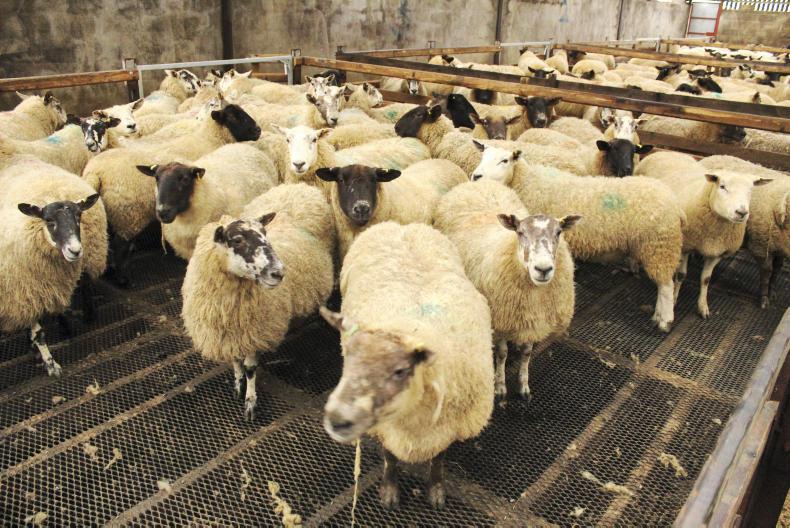
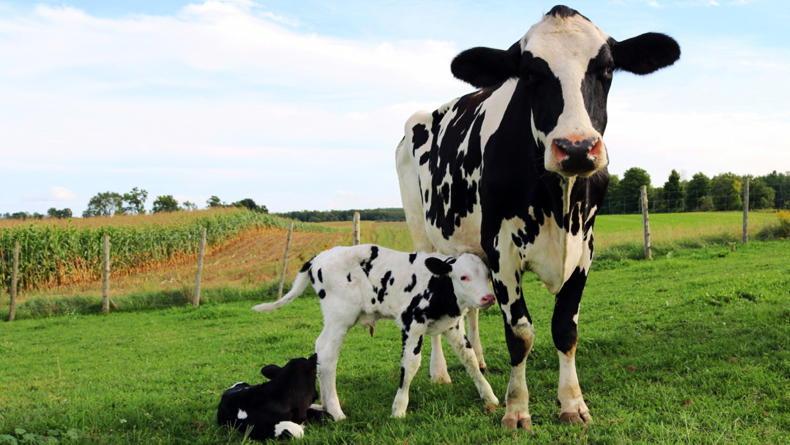
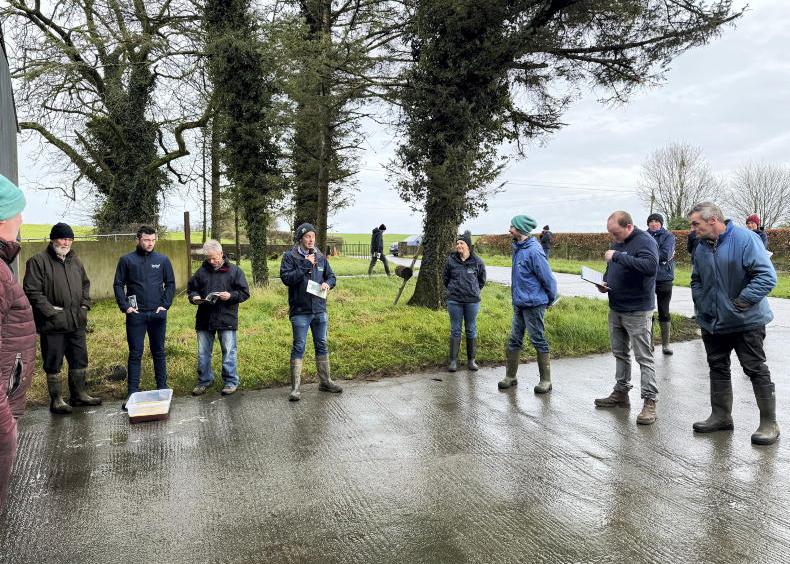
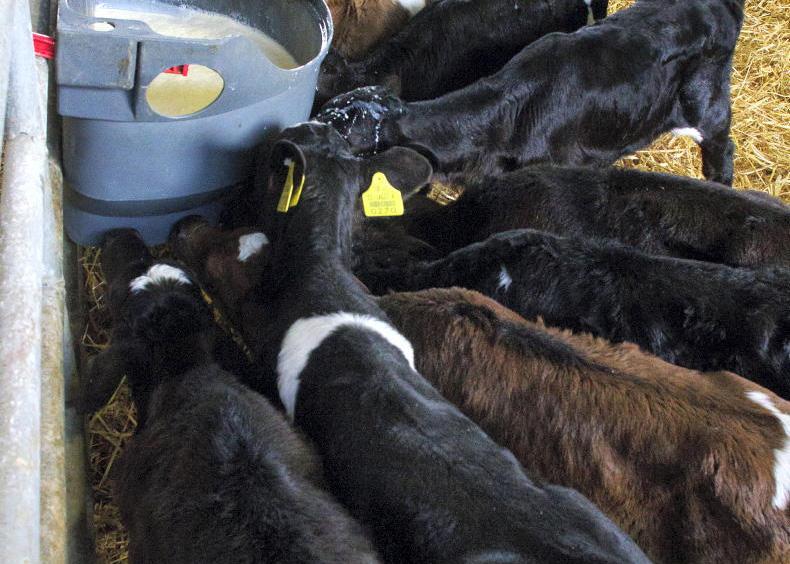
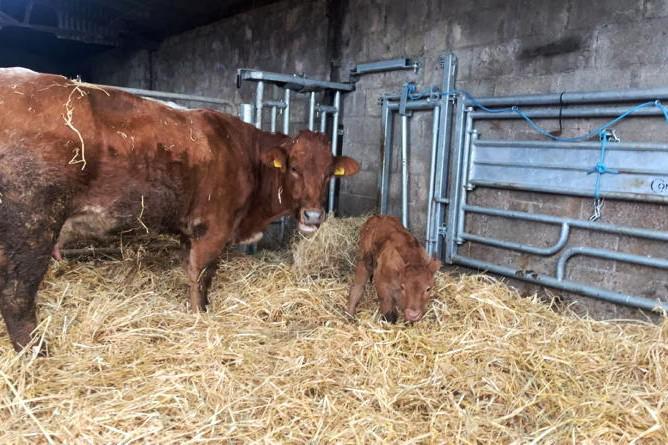
SHARING OPTIONS